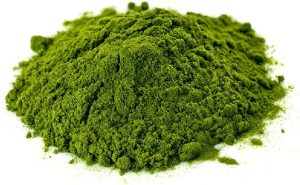
- Overview of Iron
- Brief History of Iron
- Functions of Iron
- Recommended Daily Intake (RDI), Recommended Dietary Allowance (RDA), Adequate Intake (AI), or Reference Nutrient Intake (RNI) for Iron
- Deficiency of Iron
- Food Sources of Iron and Where to Get It From
- Iron and Its Interaction with Other Medications
- Websites and Articles to Delve into the Benefits of Iron
- Disclaimer
Overview of Iron
Iron is an essential mineral vital for various physiological functions in the human body. It plays a crucial role in the formation of hemoglobin, the protein responsible for transporting oxygen in red blood cells.
Adequate iron levels are essential for preventing iron-deficiency anemia, characterized by fatigue, weakness, and impaired cognitive function. Iron is also involved in energy metabolism, immune function, and the synthesis of certain enzymes.
Dietary sources of iron include red meat, poultry, fish, legumes, and fortified cereals. Iron supplements are commonly prescribed to address iron deficiencies, but excessive iron intake can lead to toxicity.
Individuals at risk of deficiency or toxicity should seek guidance from healthcare professionals to ensure optimal iron levels for overall health.
Brief History of Iron
The use of iron as a medicinal remedy has a long and varied history, reflecting evolving understandings of its importance in human health. Here’s a brief overview of the history of iron medicine:
- Ancient Civilizations:
- Ancient civilizations, including the Egyptians and Greeks, recognized the association between dietary iron and health. They often used iron-containing foods and substances as tonics or remedies for various ailments.
- Ayurvedic Medicine:
- In traditional Indian medicine (Ayurveda), iron-containing compounds were utilized to treat conditions related to blood and vitality. Ayurvedic practitioners recognized the importance of maintaining balance in bodily humors, including blood.
- Middle Ages:
- During the Middle Ages, the concept of “bloodletting” was prevalent in European medicine. Iron instruments were sometimes used in bloodletting procedures, although the understanding of iron’s role in preventing or treating anemia was limited.
- 18th Century:
- In the 18th century, scientific advancements led to a better understanding of the relationship between iron, red blood cells, and oxygen transport. However, it wasn’t until the 19th century that iron deficiency anemia was clinically recognized and associated with inadequate dietary iron.
- Development of Iron Supplements:
- The development of iron supplements, including ferrous sulfate, ferrous gluconate, and ferrous fumarate, occurred in the 20th century. These supplements became crucial in addressing iron deficiencies and anemia.
- Fortification Programs:
- In the mid-20th century, fortification programs were implemented to address widespread iron deficiencies in certain populations. Iron-fortified foods and iron supplementation played key roles in public health efforts.
- Ongoing Research:
- Ongoing research continues to explore the complex mechanisms of iron absorption, metabolism, and its role in various health conditions. Iron supplementation remains a common approach in clinical settings to manage iron deficiencies.
This table summarizes key historical periods and events related to the understanding and use of iron in medicine.
| Historical Period | Key Events and Observations |
|---|---|
| Ancient Civilizations | Egyptians and Greeks recognized the association between dietary iron and health. Iron-containing foods used as tonics and remedies. |
| Ayurvedic Medicine | Iron-containing compounds in Ayurveda used to treat conditions related to blood and vitality. Importance of maintaining balance in bodily humors, including blood. |
| Middle Ages | “Bloodletting” prevalent in European medicine; limited understanding of iron’s role in anemia. Iron instruments used in bloodletting procedures. |
| 18th Century | Scientific advancements lead to a better understanding of iron, red blood cells, and oxygen transport. Iron deficiency anemia clinically recognized in the 19th century. |
| 20th Century | Development of iron supplements like ferrous sulfate, ferrous gluconate, and ferrous fumarate. Crucial in addressing iron deficiencies and anemia. |
| Mid-20th Century | Implementation of fortification programs to address widespread iron deficiencies. Iron-fortified foods and supplementation in public health efforts. |
| Ongoing Research | Continuous exploration of iron absorption, metabolism, and its role in various health conditions. Iron supplementation remains common in clinical settings for managing deficiencies. |
Today, iron medicine is a well-established field, with a range of iron formulations available for therapeutic use. The understanding of iron’s role in human health has significantly advanced, contributing to more effective treatments for iron-related disorders.
Functions of Iron
Iron is an essential mineral that plays crucial roles in the human body, and iron medicine is often prescribed to address deficiencies. Here are the key functions of iron in medicine:
- Hemoglobin Synthesis:
- Iron is a vital component of hemoglobin, the protein in red blood cells responsible for transporting oxygen from the lungs to the rest of the body.
- Oxygen Transport:
- Hemoglobin, with its iron component, binds to oxygen in the lungs and releases it in tissues, ensuring proper oxygen transport for energy production.
- Myoglobin Formation:
- Iron is also involved in the synthesis of myoglobin, a protein in muscle cells that facilitates the storage and release of oxygen for muscle function.
- Energy Metabolism:
- Iron is a cofactor for enzymes involved in energy metabolism, including those related to the citric acid cycle and electron transport chain.
- DNA Synthesis:
- Iron plays a role in the synthesis of DNA, supporting cell division and growth.
- Neurotransmitter Production:
- Iron is involved in the synthesis of neurotransmitters such as dopamine, norepinephrine, and serotonin, impacting mood and cognitive function.
- Immune Function:
- Iron is necessary for the proper functioning of immune cells and the production of certain immune-related proteins.
- Prevention and Treatment of Anemia:
- Iron medicine is commonly prescribed to prevent or treat iron-deficiency anemia, a condition characterized by insufficient red blood cells due to low iron levels.
- Pregnancy Support:
- Iron supplementation is often recommended during pregnancy to meet increased maternal and fetal iron needs.
- Restoration of Iron Levels:
- Iron medicine is prescribed to restore iron levels in individuals with diagnosed iron deficiencies, either due to insufficient dietary intake, poor absorption, or increased demand.
- Athletic Performance:
- Athletes, especially those engaged in endurance sports, may benefit from iron supplementation to support oxygen transport and overall energy metabolism.
It’s important to note that while iron is essential for health, excessive iron intake can lead to toxicity. Iron medicine should be used under the guidance of healthcare professionals, who can determine the appropriate dosage based on individual needs and monitor for potential side effects.
Recommended Daily Intake (RDI), Recommended Dietary Allowance (RDA), Adequate Intake (AI), or Reference Nutrient Intake (RNI) for Iron
The recommended intake for iron varies depending on factors such as age, sex, and life stage. Different organizations provide guidelines on iron intake, and the terms used for these recommendations may vary. Here are some commonly used terms:
- Recommended Dietary Allowance (RDA):
- The RDA is the average daily intake sufficient to meet the nutrient requirements of nearly all (97-98%) healthy individuals in a particular life stage and sex.
- Adequate Intake (AI):
- The AI is used when there is insufficient scientific evidence to establish an RDA. It represents an amount assumed to ensure nutritional adequacy in the absence of specific RDA values.
- Reference Nutrient Intake (RNI):
- RNI is a term used in some countries and is similar to the RDA, representing the amount of a nutrient that is enough to meet the needs of almost all individuals in a specific population group.
According to the U.S. National Academies of Sciences, Engineering, and Medicine, the Recommended Dietary Allowance (RDA) for iron varies by age and sex:
- Infants (7-12 months): 11 mg per day
- Children (1-3 years): 7 mg per day
- Children (4-8 years): 10 mg per day
- Males (9-13 years): 8 mg per day
- Females (9-13 years): 8 mg per day
- Males (14-18 years): 11 mg per day
- Females (14-18 years): 15 mg per day
- Adult Males (19 years and older): 8 mg per day
- Adult Females (19-50 years): 18 mg per day
- Adult Females (51 years and older): 8 mg per day
- Pregnant Females (all ages): 27 mg per day
- Lactating Females (all ages): 9 mg per day
These values can be subject to updates and revisions by health organizations, and it’s advisable to check with the latest dietary guidelines or consult with healthcare professionals for the most current information.
Deficiency of Iron
Iron deficiency occurs when the body’s iron levels are insufficient to meet its physiological needs. Iron is a crucial component of hemoglobin, the protein in red blood cells that carries oxygen from the lungs to the rest of the body. When there is a shortage of iron, the body cannot produce an adequate amount of healthy red blood cells, leading to iron deficiency anemia.
Common Causes of Iron Deficiency Include the Following:
- Inadequate Dietary Intake:
- Not consuming enough iron-rich foods, especially in diets lacking in meat, poultry, fish, and iron-fortified foods.
- Poor Iron Absorption:
- Certain medical conditions, such as celiac disease or inflammatory bowel diseases, can impair the absorption of iron from the digestive tract.
- Increased Iron Requirements:
- Rapid growth phases, such as during infancy, adolescence, and pregnancy, increase the body’s iron requirements. If dietary intake does not match these increased needs, deficiency can occur.
- Blood Loss:
- Chronic blood loss due to menstruation, gastrointestinal bleeding, or other conditions can deplete iron levels over time.
- Medical Procedures:
- Surgical procedures, frequent blood donations, or certain medical treatments may contribute to iron loss.
Symptoms of Iron Deficiency Can Include:
- Fatigue
- Weakness
- Pale skin
- Shortness of breath
- Dizziness or lightheadedness
- Cold hands and feet
- Brittle nails
- Headaches
- Poor concentration and cognitive function
If left untreated, iron deficiency can lead to iron deficiency anemia, which can have more severe consequences, including:
- Increased risk of infections
- Impaired cognitive function
- Delayed growth and development in children
- Complications during pregnancy, such as preterm birth and low birth weight
Treatment for iron deficiency usually involves iron supplementation, dietary changes to include more iron-rich foods, and addressing any underlying causes, such as treating conditions that affect iron absorption. It’s essential for individuals experiencing symptoms of iron deficiency to consult with healthcare professionals for proper diagnosis and management.
Food Sources of Iron and Where to Get It From
Iron is found in a variety of foods, and incorporating a diverse range of these sources into your diet can help maintain adequate iron levels. Here are common food sources of iron and where to get them:
- Red Meat:
- Beef, lamb, and pork are rich sources of heme iron, which is more easily absorbed by the body.
- Poultry:
- Chicken and turkey provide heme iron, similar to red meat. Consuming both dark and white meat can contribute to iron intake.
- Fish:
- Certain types of fish, such as tuna, salmon, and halibut, contain heme iron. Canned sardines and mackerel are also good sources.
- Shellfish:
- Shellfish, including clams, mussels, oysters, and shrimp, are excellent sources of heme iron.
- Legumes:
- Beans, lentils, chickpeas, and other legumes are rich in non-heme iron, a form of iron found in plant-based foods.
- Tofu and Tempeh:
- These soy-based products provide non-heme iron and are suitable for vegetarians and vegans.
- Nuts and Seeds:
- Almonds, cashews, pumpkin seeds, and sunflower seeds contain non-heme iron. Pairing them with vitamin C-rich foods can enhance iron absorption.
- Whole Grains:
- Fortified cereals, whole wheat, quinoa, and oats are good sources of non-heme iron. Choose whole grains for added nutritional benefits.
- Vegetables:
- Dark green leafy vegetables, such as spinach, kale, and Swiss chard, contain non-heme iron. Cooking methods can affect iron absorption.
- Dried Fruits:
- Raisins, apricots, and prunes provide non-heme iron. They can be incorporated into snacks or added to cereals.
- Fortified Foods:
- Certain foods, such as fortified breakfast cereals and plant-based milk alternatives (fortified with iron), contribute to dietary iron intake.
To enhance iron absorption, consider the following tips:
- Vitamin C-rich Foods:
- Consume fruits and vegetables high in vitamin C (e.g., citrus fruits, strawberries, bell peppers) with iron-rich meals to increase non-heme iron absorption.
- Avoid Tea and Coffee:
- These beverages can inhibit iron absorption, so it’s advisable to avoid consuming them with iron-rich meals.
If you have concerns about iron deficiency or other dietary considerations, consult with a healthcare professional or a registered dietitian for personalized advice.
Iron and Its Interaction with Other Medications
Iron can interact with certain medications, affecting their absorption and efficacy. Here are some considerations regarding the interaction between iron and other medications:
- Antacids and Calcium Supplements:
- Calcium and magnesium-containing antacids, as well as calcium supplements, can reduce the absorption of non-heme iron (found in plant-based foods and supplements) when taken simultaneously. It’s advisable to separate the doses by a few hours.
- Proton Pump Inhibitors (PPIs) and H2 Blockers:
- Medications that reduce stomach acid, such as proton pump inhibitors (PPIs) and H2 blockers, can decrease the absorption of non-heme iron. Taking iron supplements with vitamin C or on an empty stomach may improve absorption.
- Tetracycline Antibiotics:
- Tetracycline antibiotics can form complexes with iron, reducing the absorption of both substances. It’s recommended to take tetracycline antibiotics a few hours apart from iron supplements.
- Quinolone Antibiotics:
- Quinolone antibiotics (e.g., ciprofloxacin) may form complexes with iron, potentially reducing the absorption of both substances. They should be taken at least two hours apart from iron supplements.
- Levothyroxine (Thyroid Medication):
- Iron supplements can interfere with the absorption of levothyroxine, a medication used to treat hypothyroidism. It’s recommended to take levothyroxine on an empty stomach and separate its administration from iron supplements.
- Methyldopa (Antihypertensive):
- Iron supplements may reduce the absorption of methyldopa, a medication used to treat hypertension. Separating their administration may be advisable.
- Penicillamine:
- Penicillamine, a medication used for certain autoimmune conditions, may form complexes with iron, potentially reducing the absorption of both substances.
- Bisphosphonates (Osteoporosis Medications):
- Bisphosphonates, used for the treatment of osteoporosis, may have reduced absorption when taken with iron supplements. It’s recommended to take bisphosphonates on an empty stomach with water.
It’s crucial to inform your healthcare provider about all medications and supplements you are taking, including iron supplements. They can provide guidance on the appropriate timing of medications and supplements to minimize potential interactions. Additionally, healthcare professionals may adjust medication dosages based on individual health conditions and treatment plans. Always follow the advice and instructions provided by your healthcare provider.
Websites and Articles to Delve into the Benefits of Iron
Iron Information:
- Cleveland Clinic – Iron Oral Supplements for Anemia:
- Information on the use of oral iron supplements for anemia.
- WebMD – Iron:
- Overview of iron, its sources, and potential health benefits.
- WebMD – Supplement Guide: Iron:
- Comprehensive guide on iron supplements and their role in nutrition.
- Mayo Clinic – Iron Supplement:
- Details on oral and parenteral iron supplements.
- MedlinePlus – Iron Supplement:
- Medical information on iron supplements.
- Wikipedia – Iron Supplement:
- Overview of iron supplements, including their history and uses.
- NHS – Ferrous Fumarate:
- Details on ferrous fumarate, an iron supplement.
- Verywell Health – Iron Supplements Benefits:
- Highlights the potential benefits of iron supplements.
- Alberta Health Services – Iron Supplements:
- Information on iron supplements and aftercare.
- NIH – Iron Fact Sheet (Health Professional):
- Detailed information on iron for health professionals.
- Healthify NZ – Iron Supplements Oral:
- Information on oral iron supplements.
- Healthline – Iron Supplements: Who Should Take Them:
- Guidance on who should consider taking iron supplements.
- Medical News Today – Iron Supplements:
- Overview of iron supplements and their uses.
- MedicineNet – Iron Supplements (Oral):
- Information on oral iron supplements.
Disclaimer
The information is solely provided for educational purposes. It is not intended to diagnose, treat, cure, or prevent any disease. Seek the advice of your physician or qualified healthcare provider with any questions you may have regarding a medical condition at all times. Never disregard professional medical advice because of something you have read or learned from this article.






